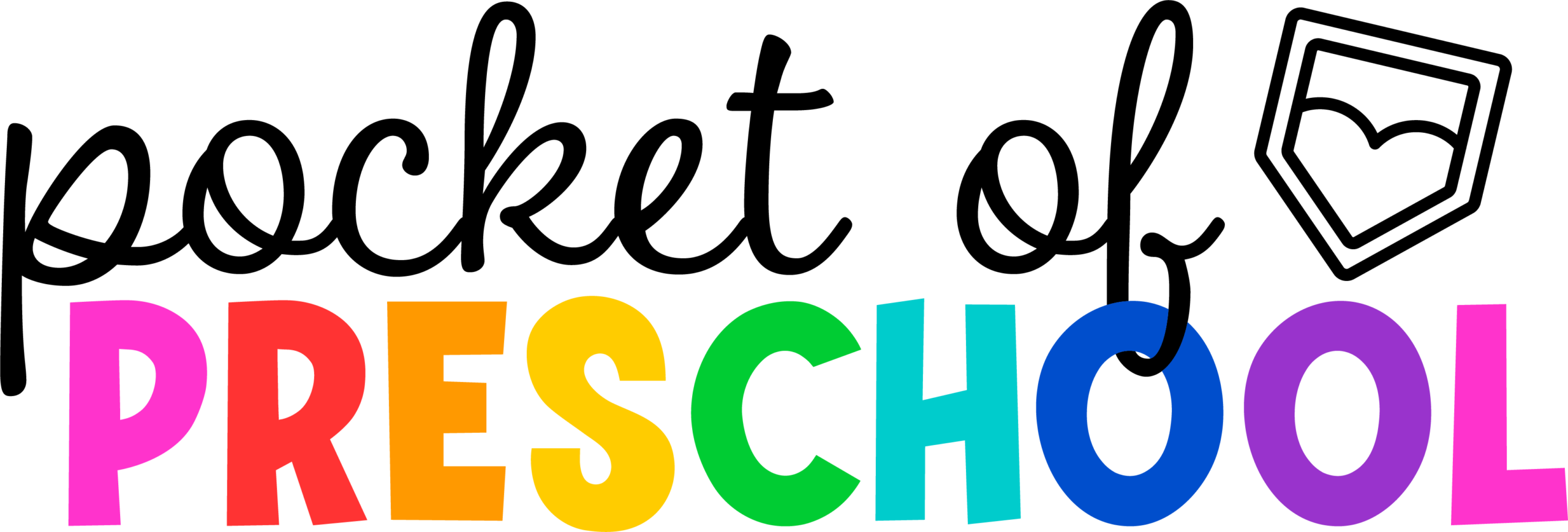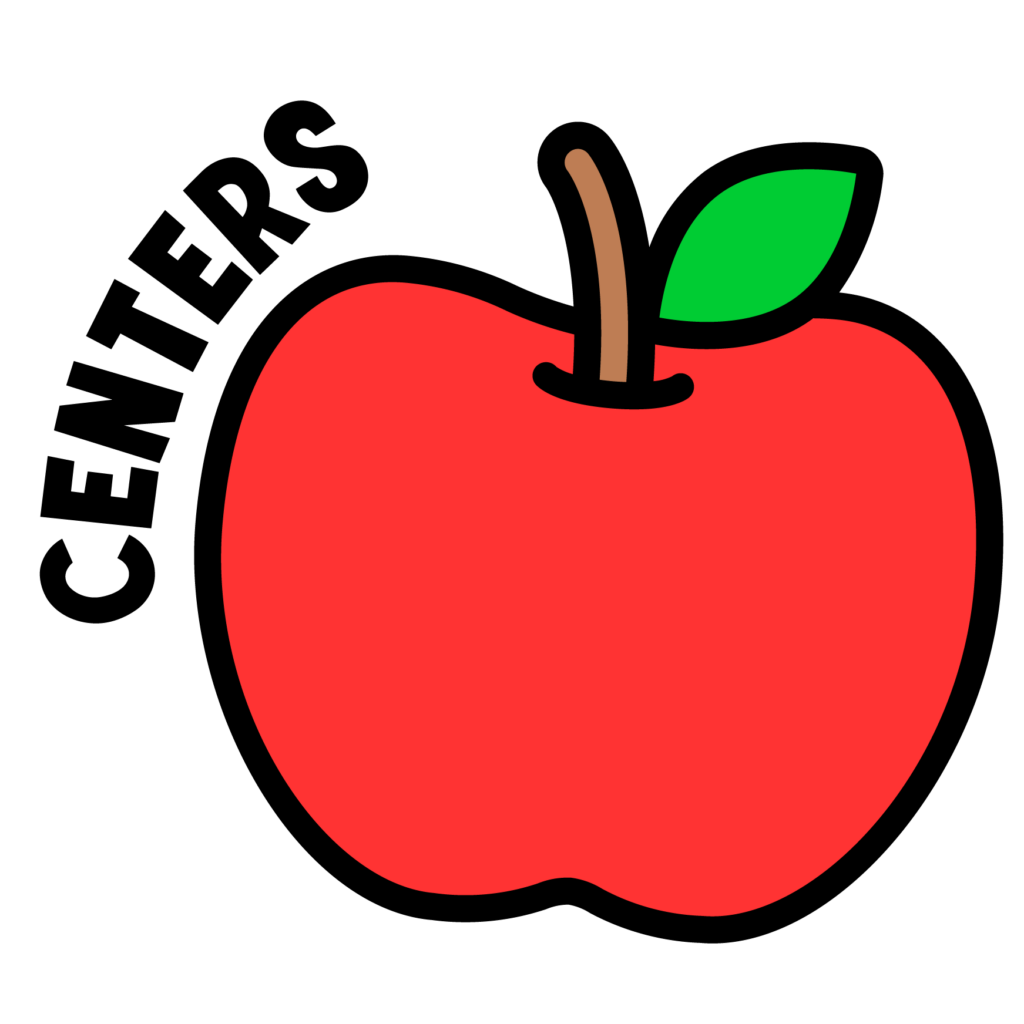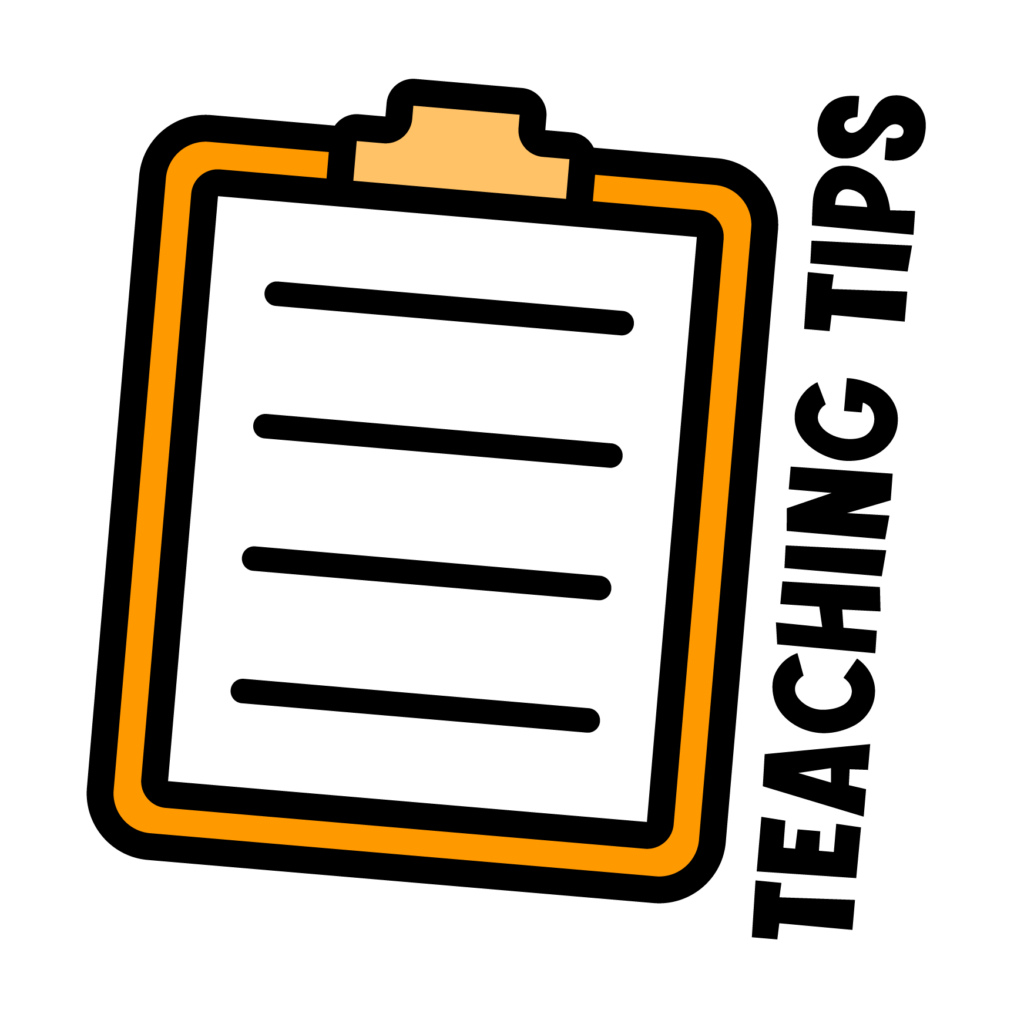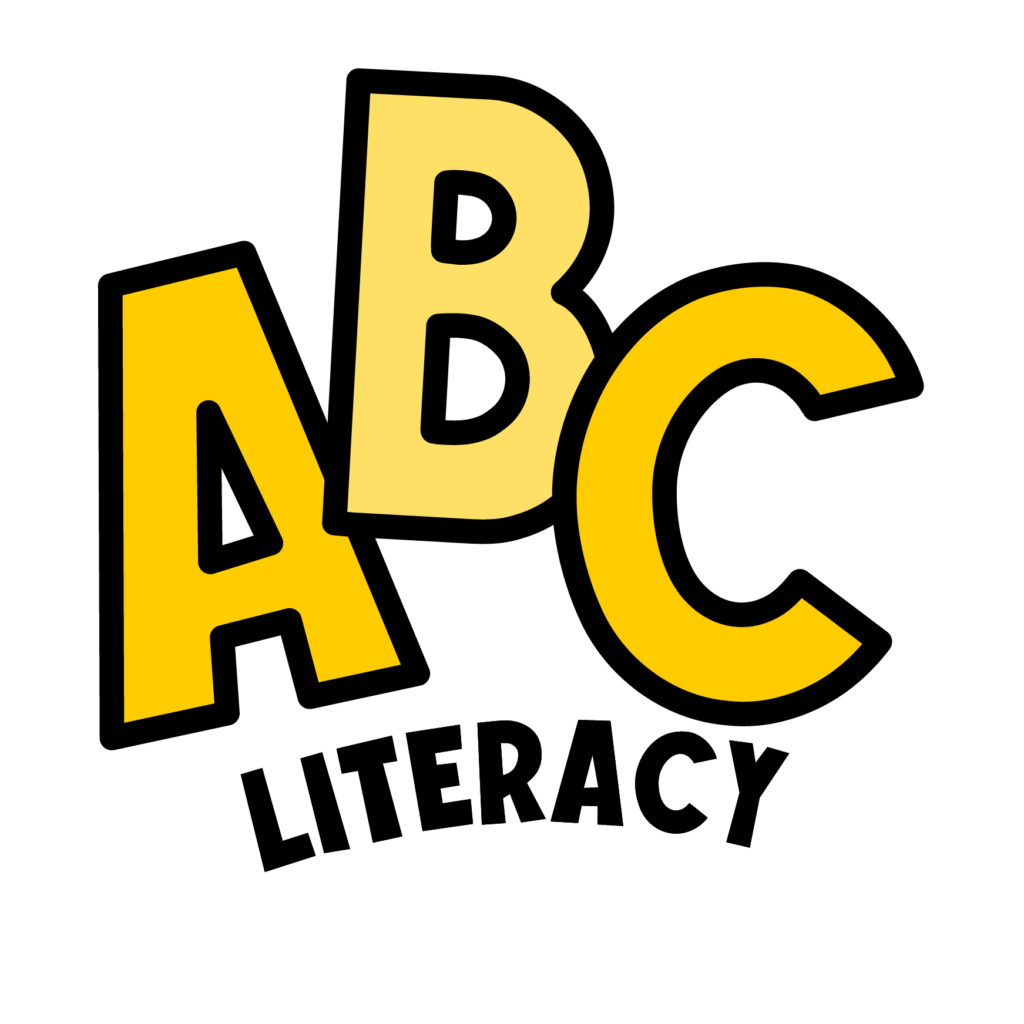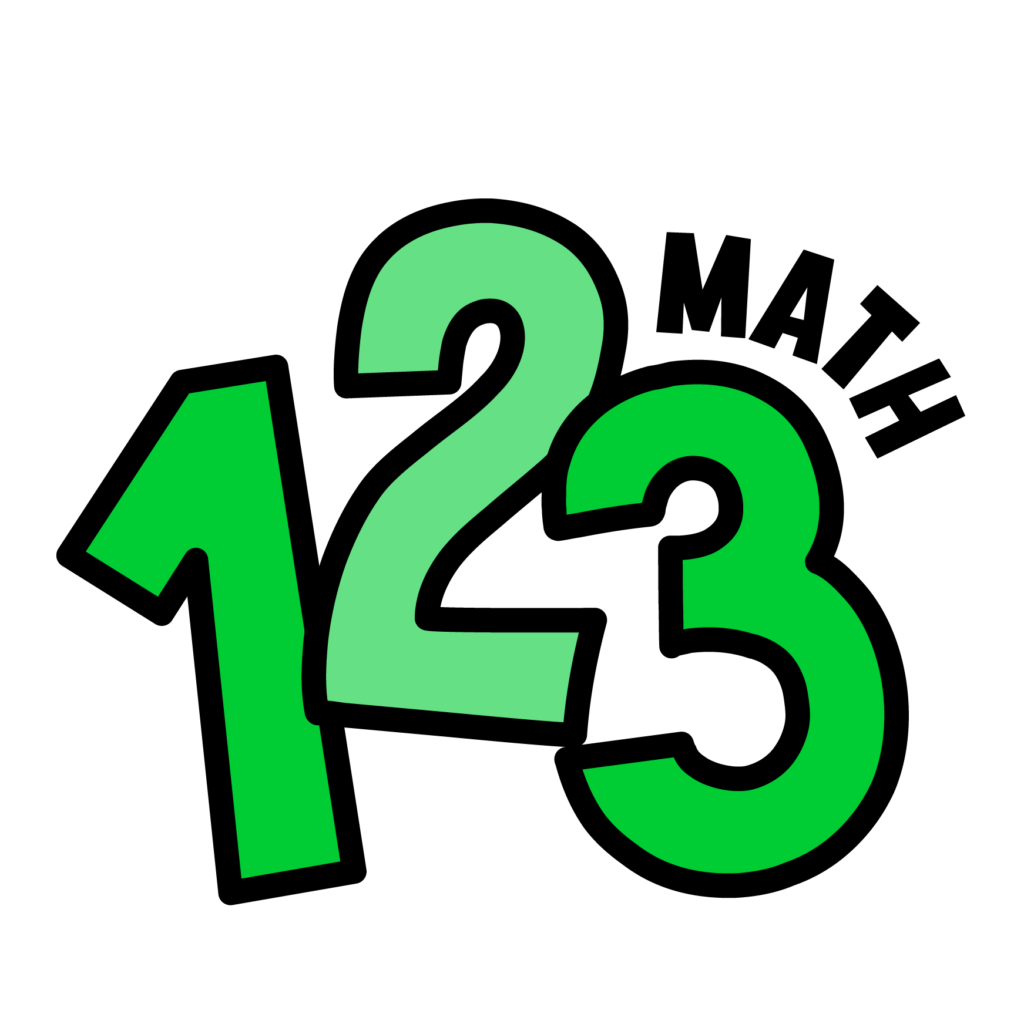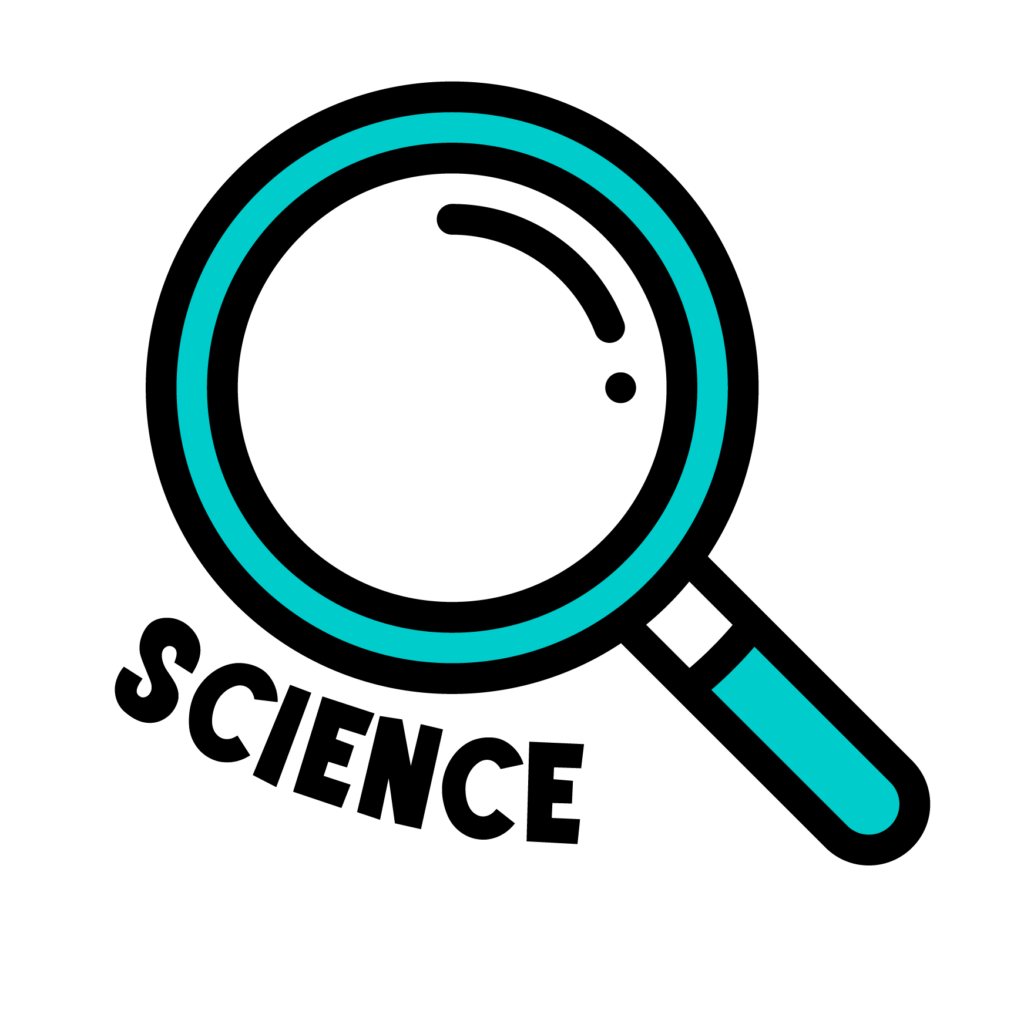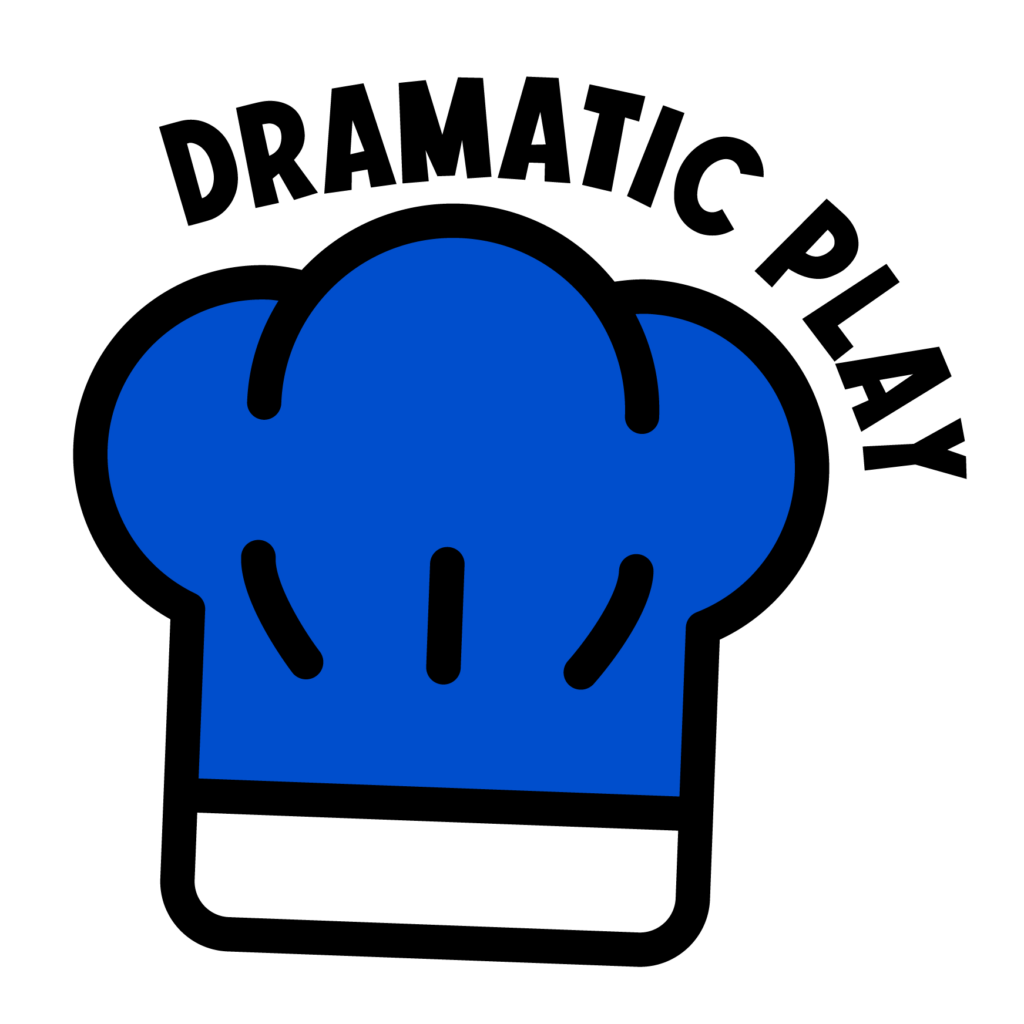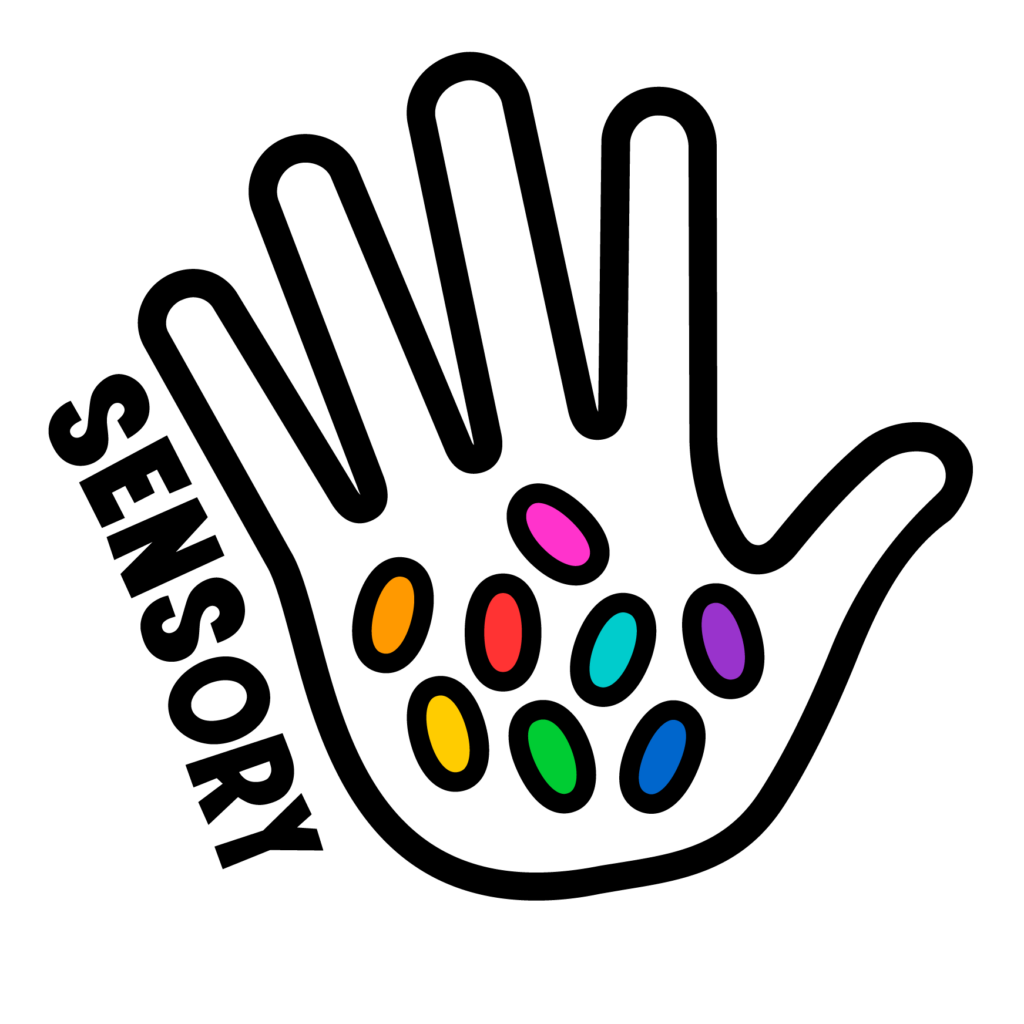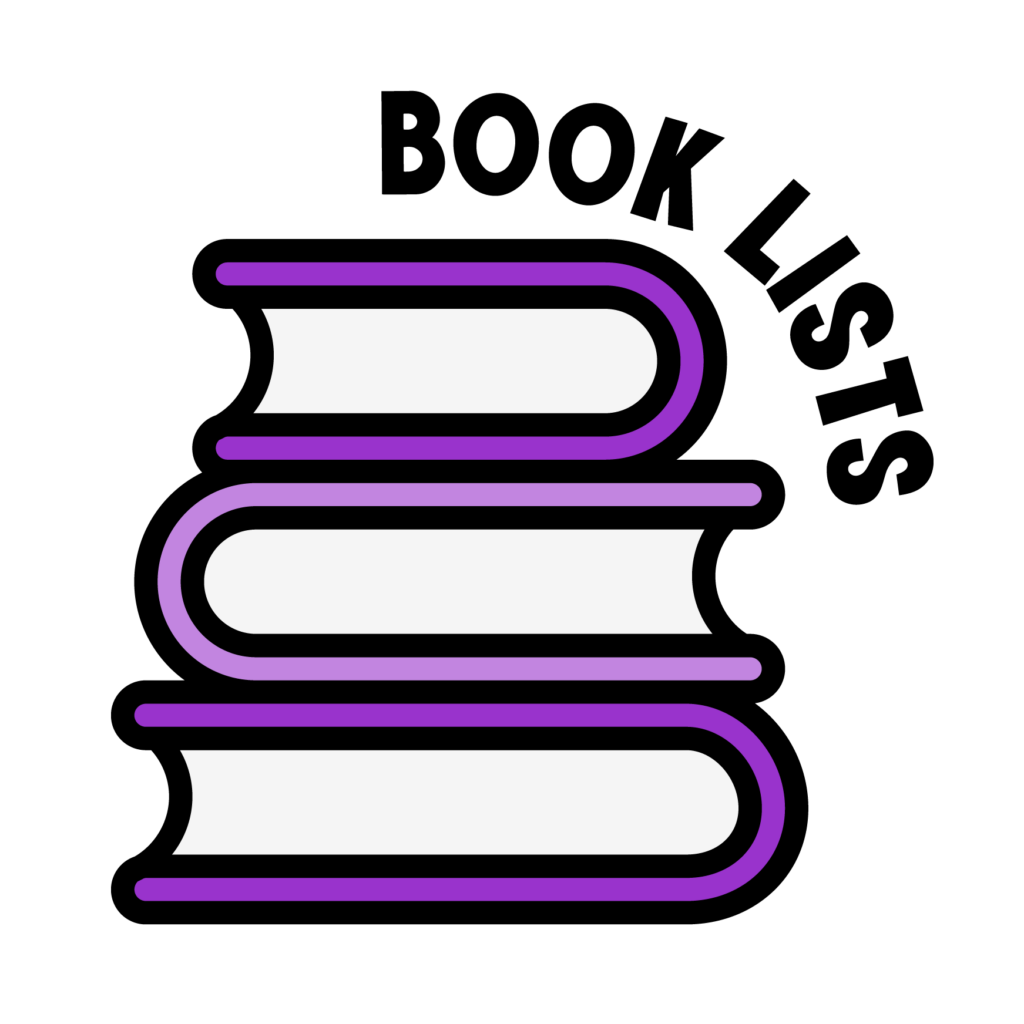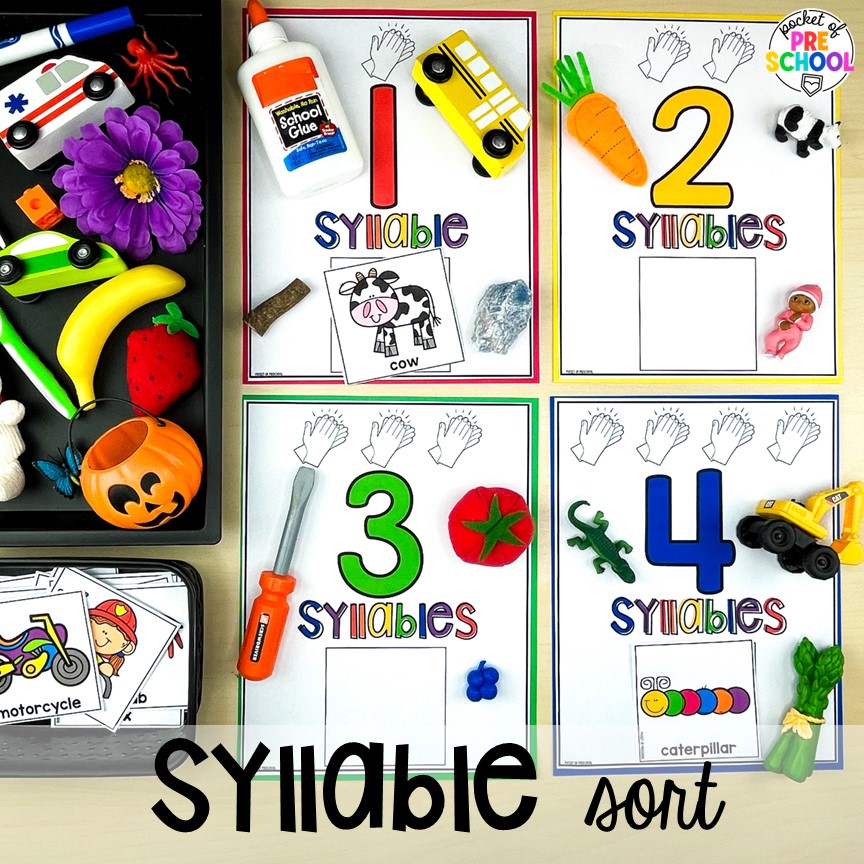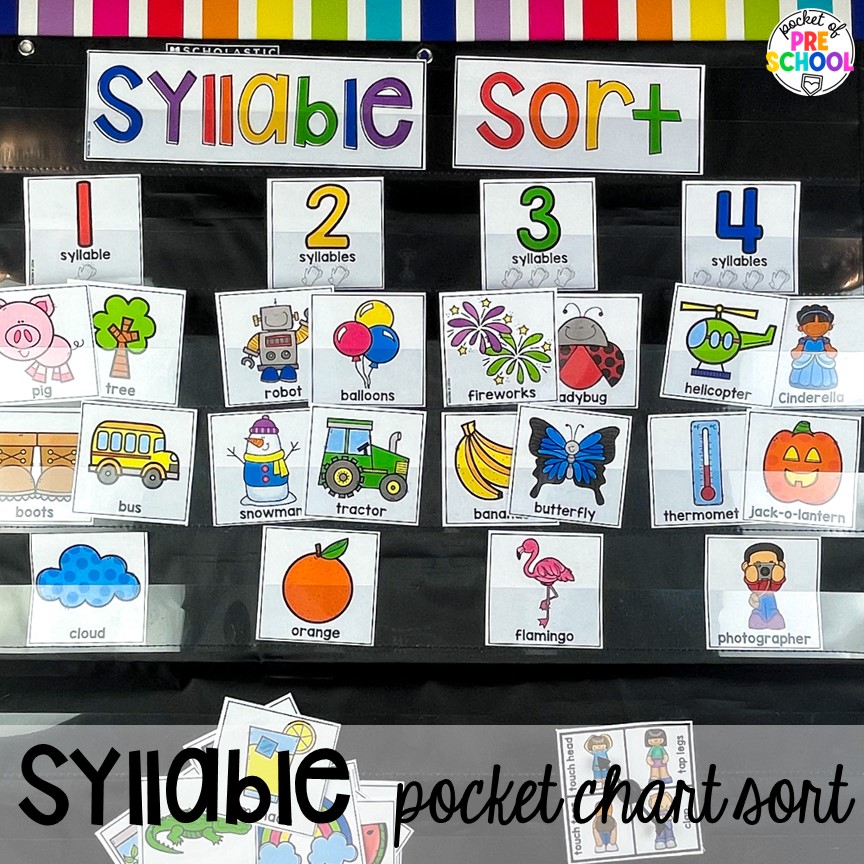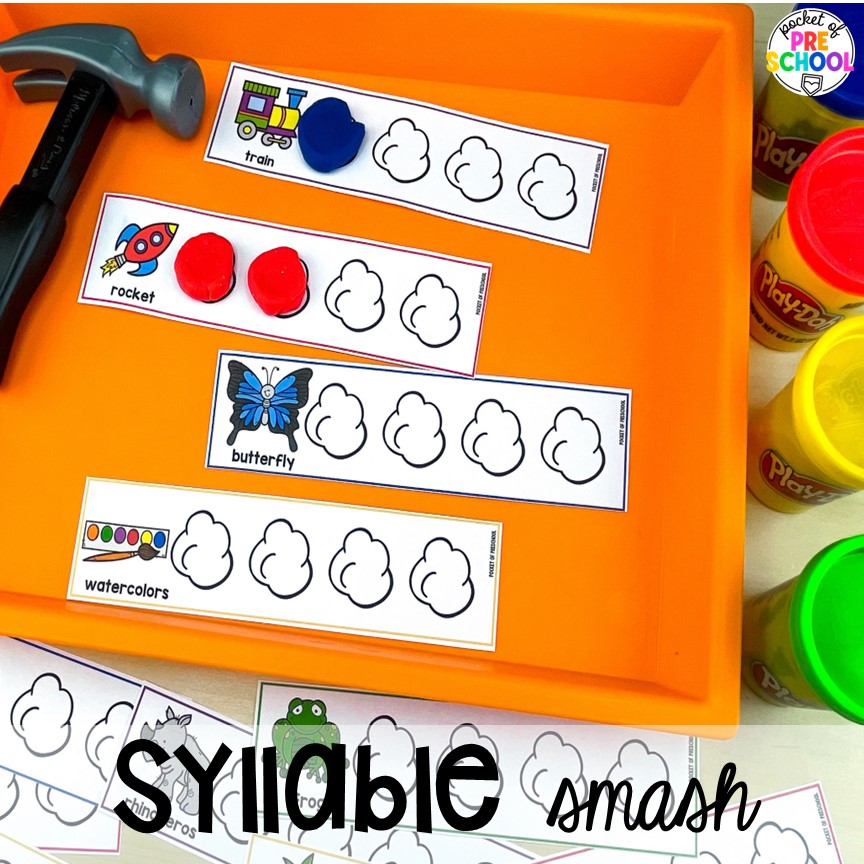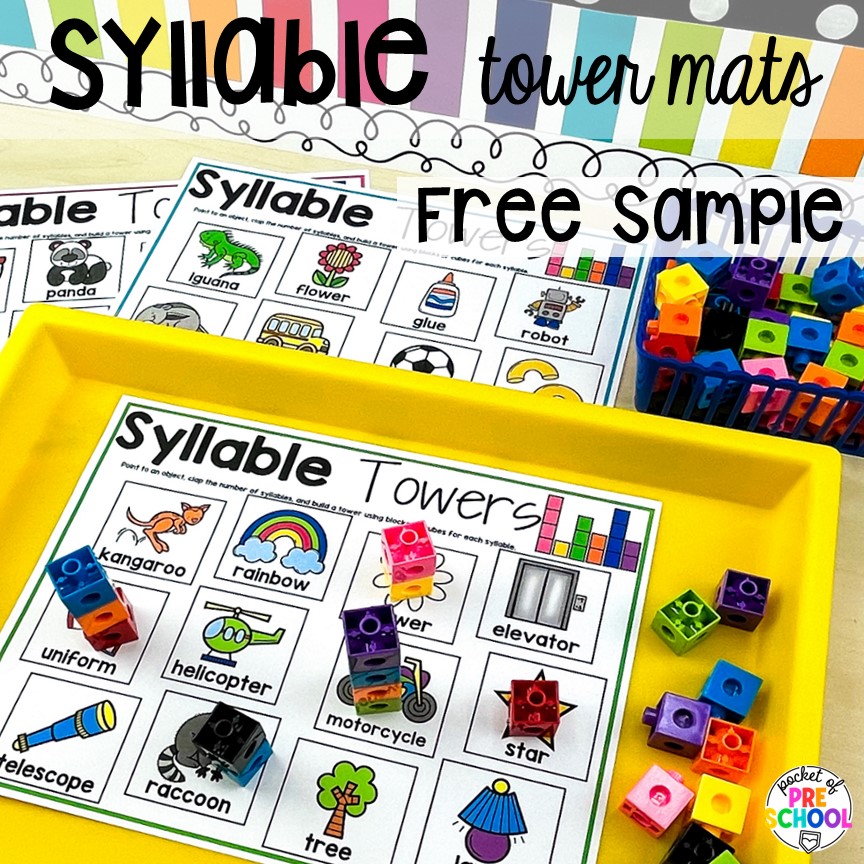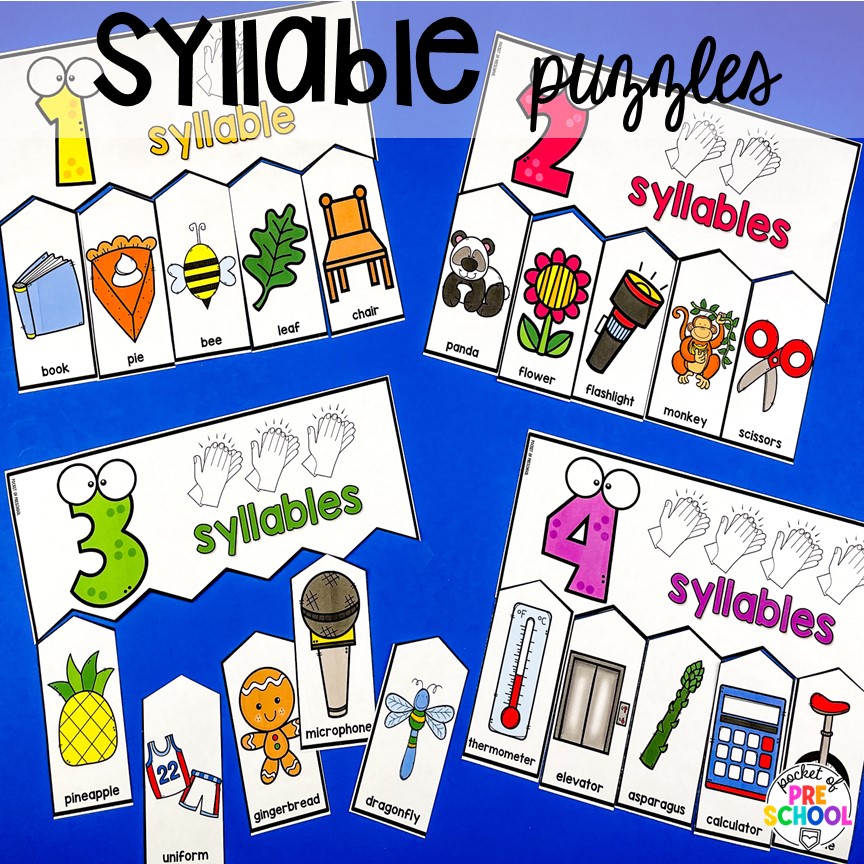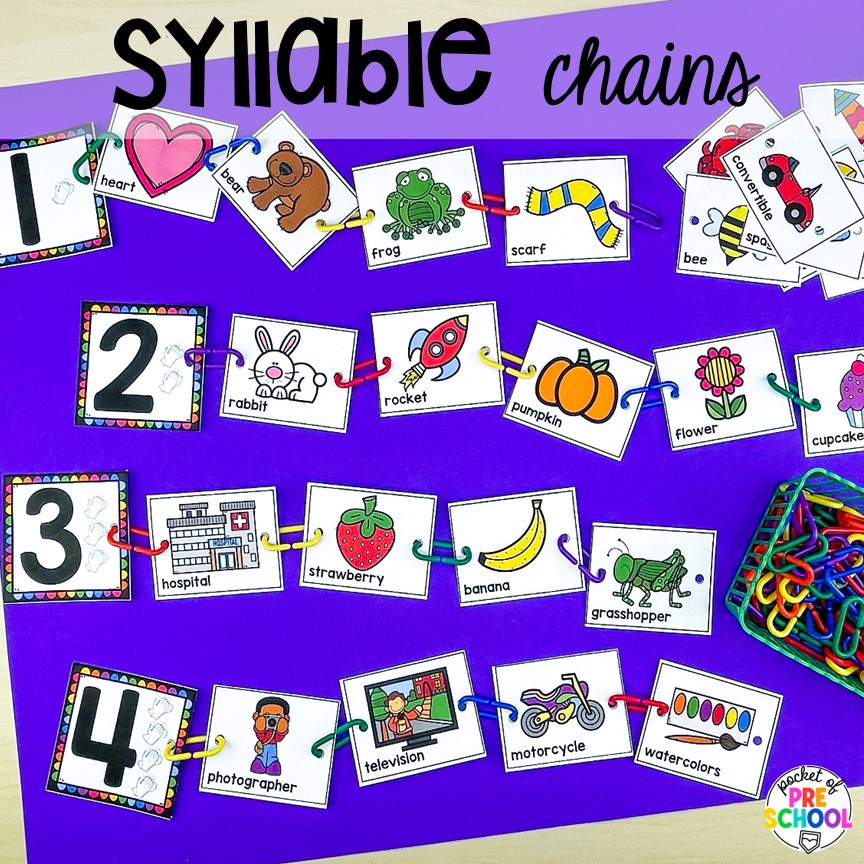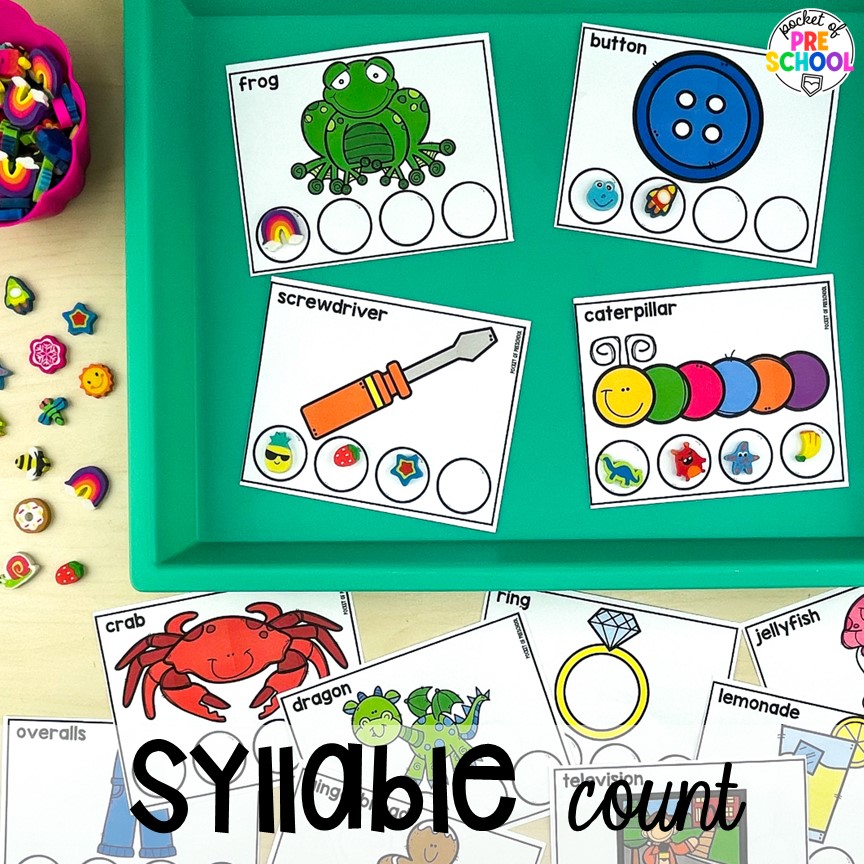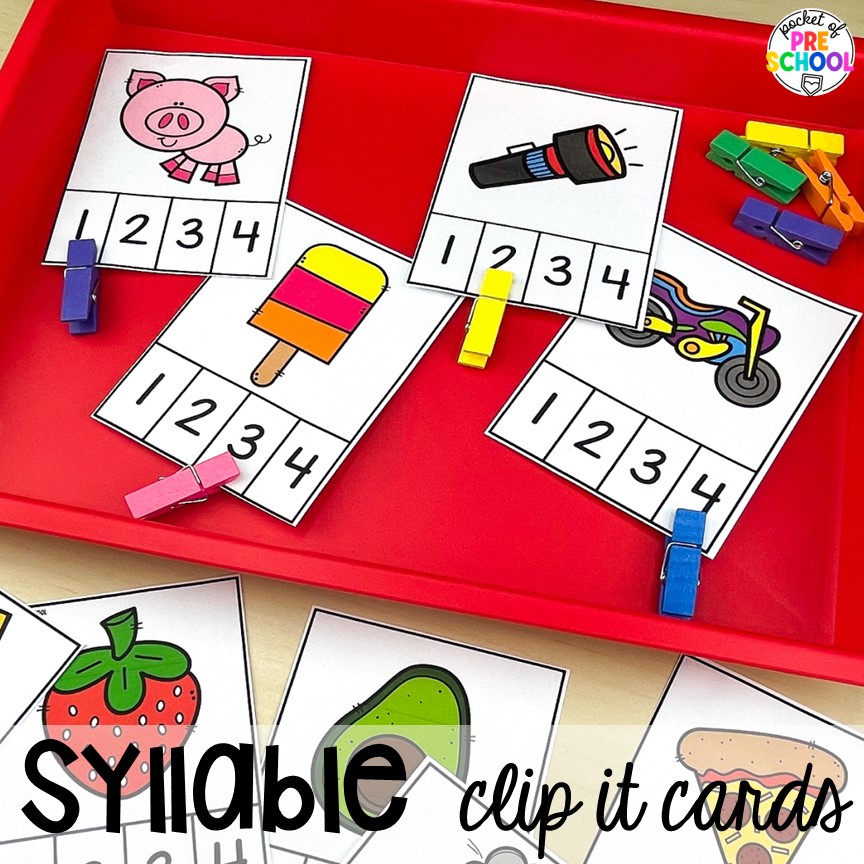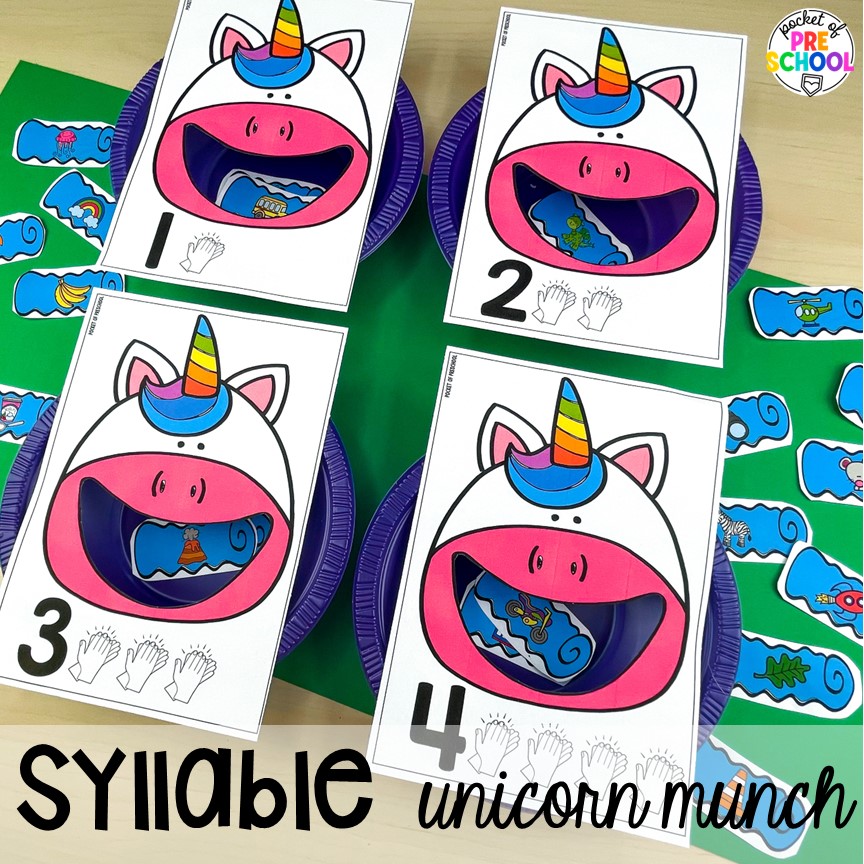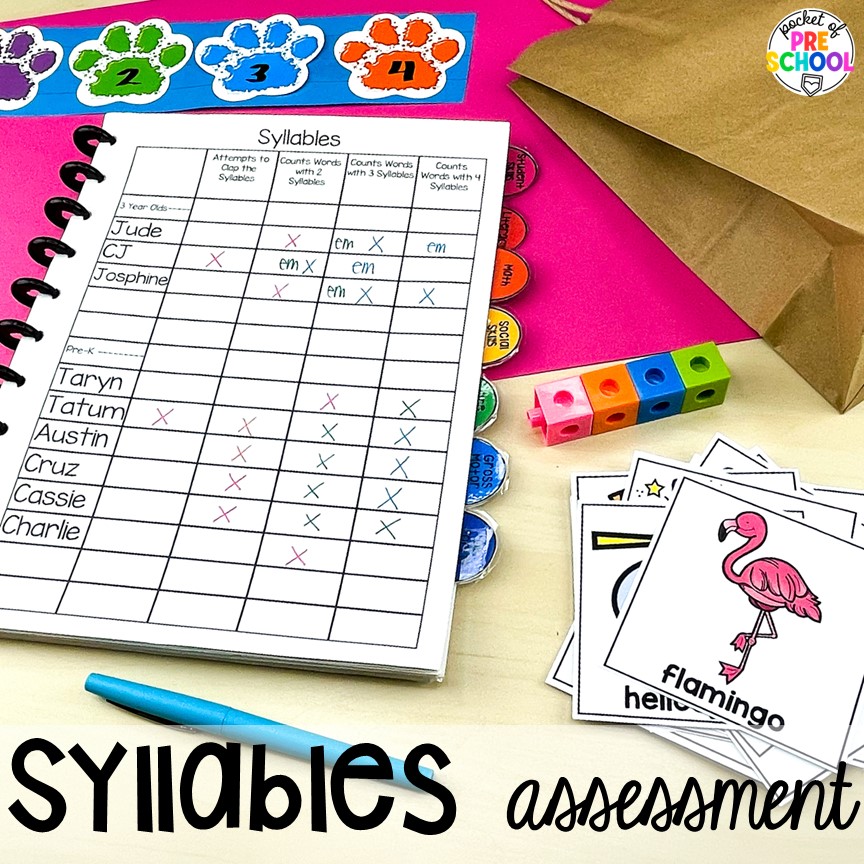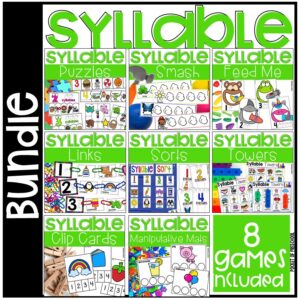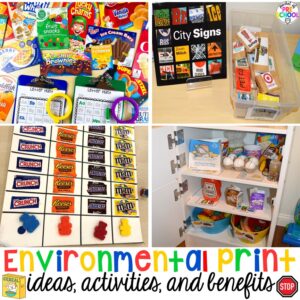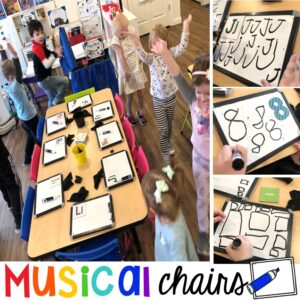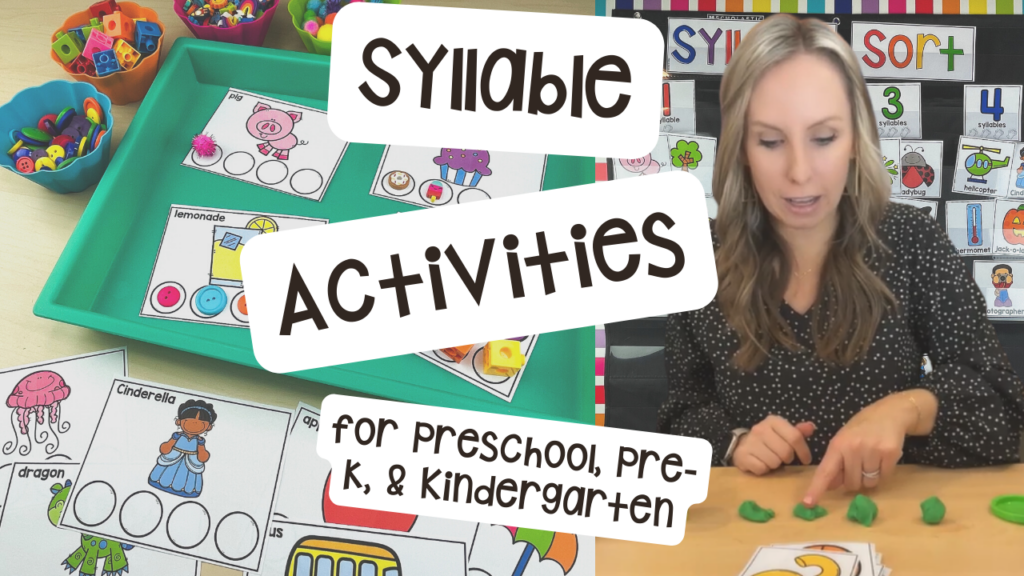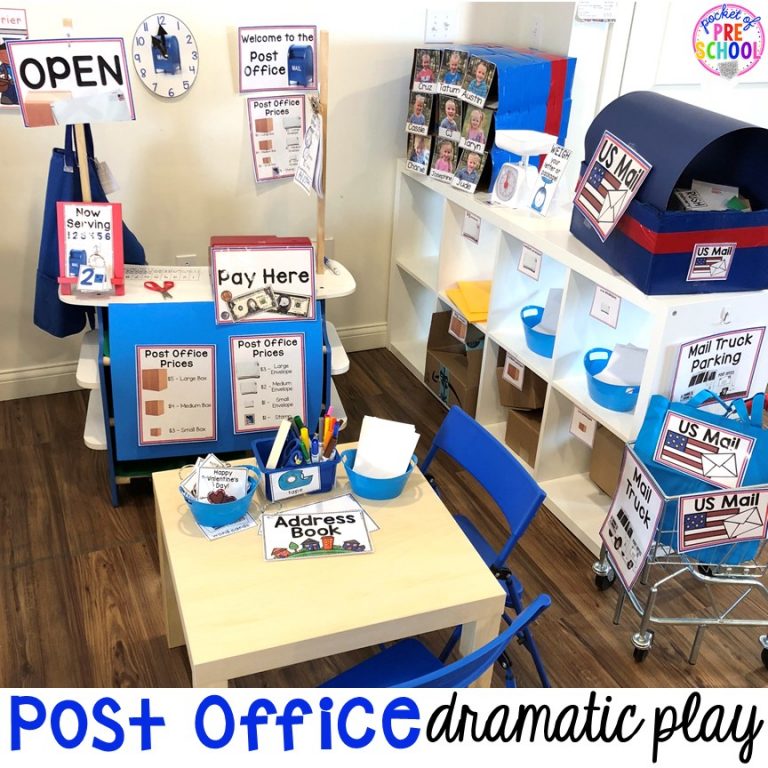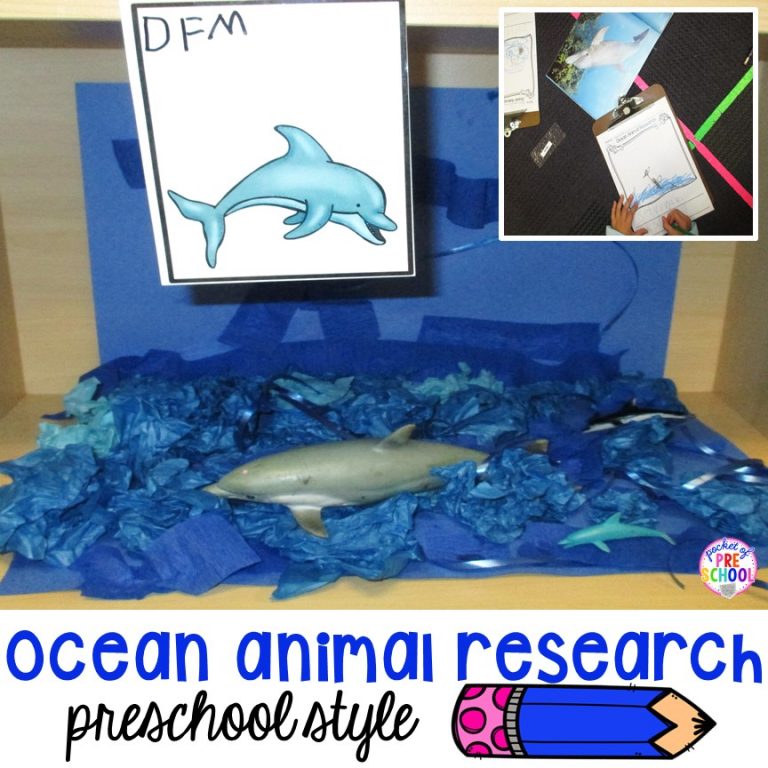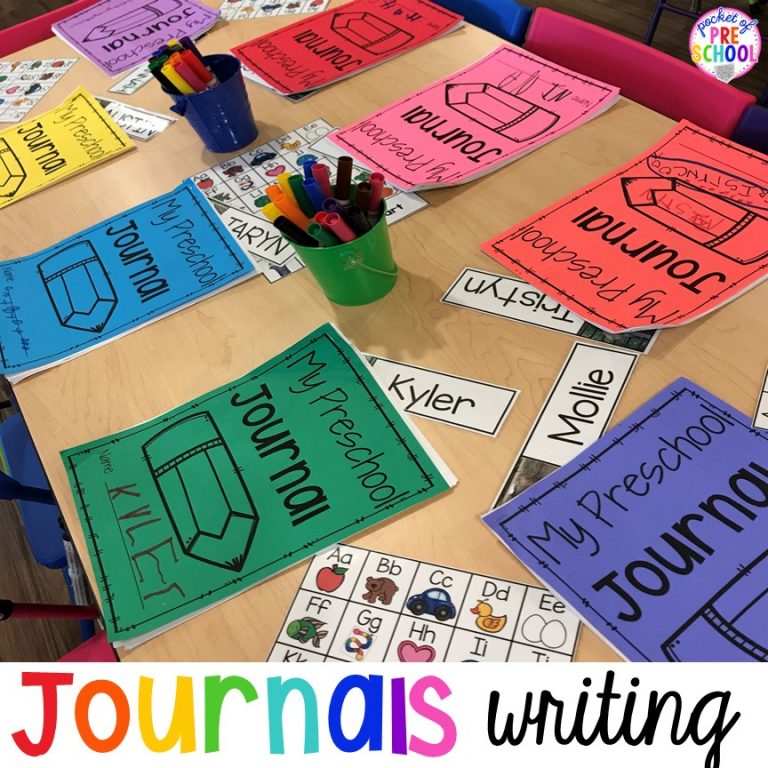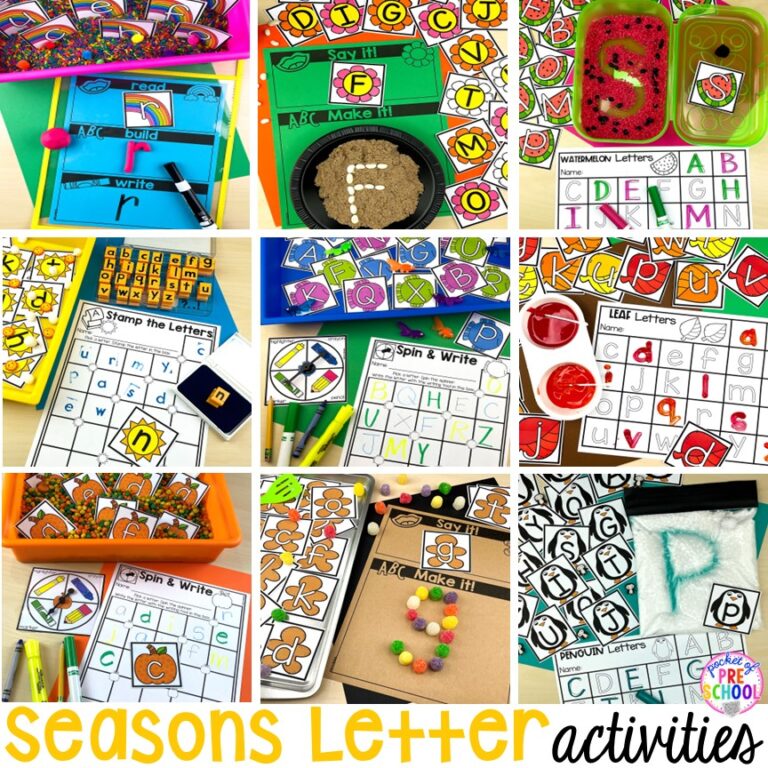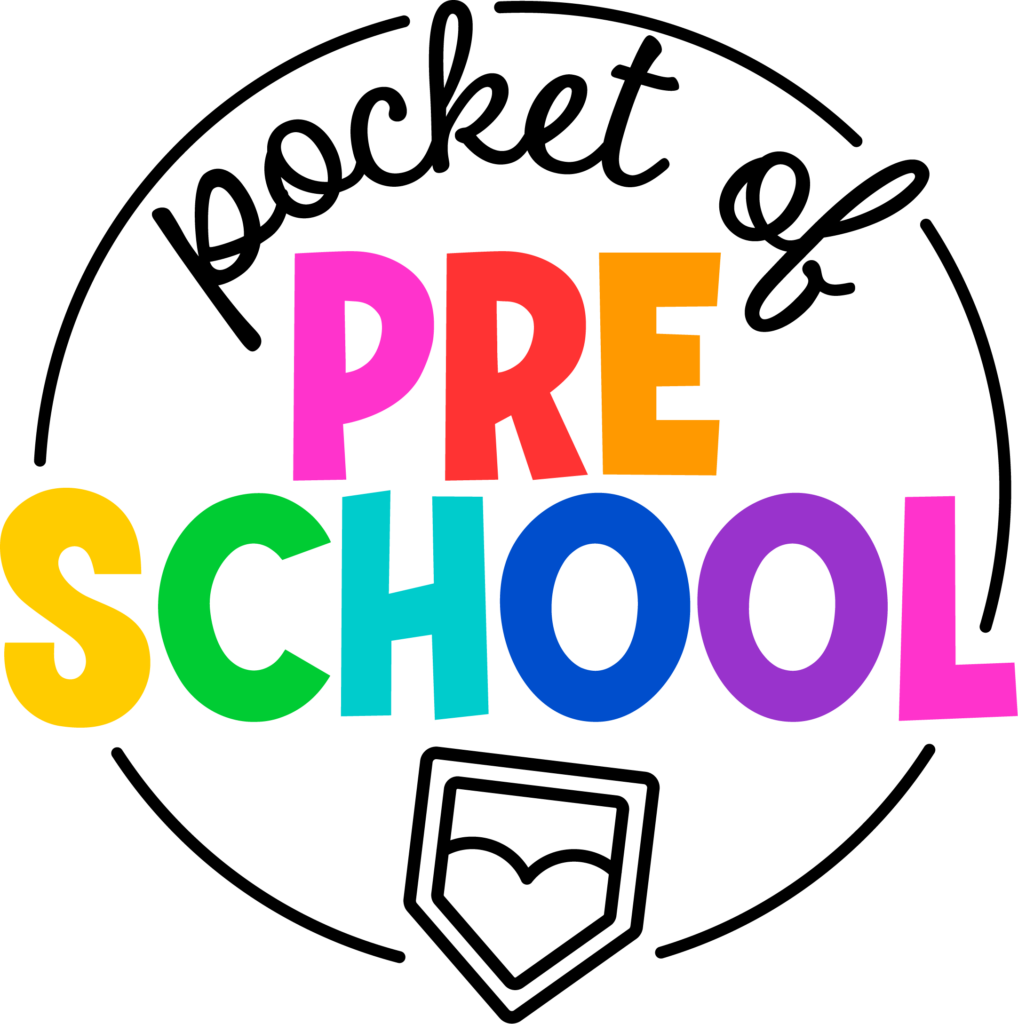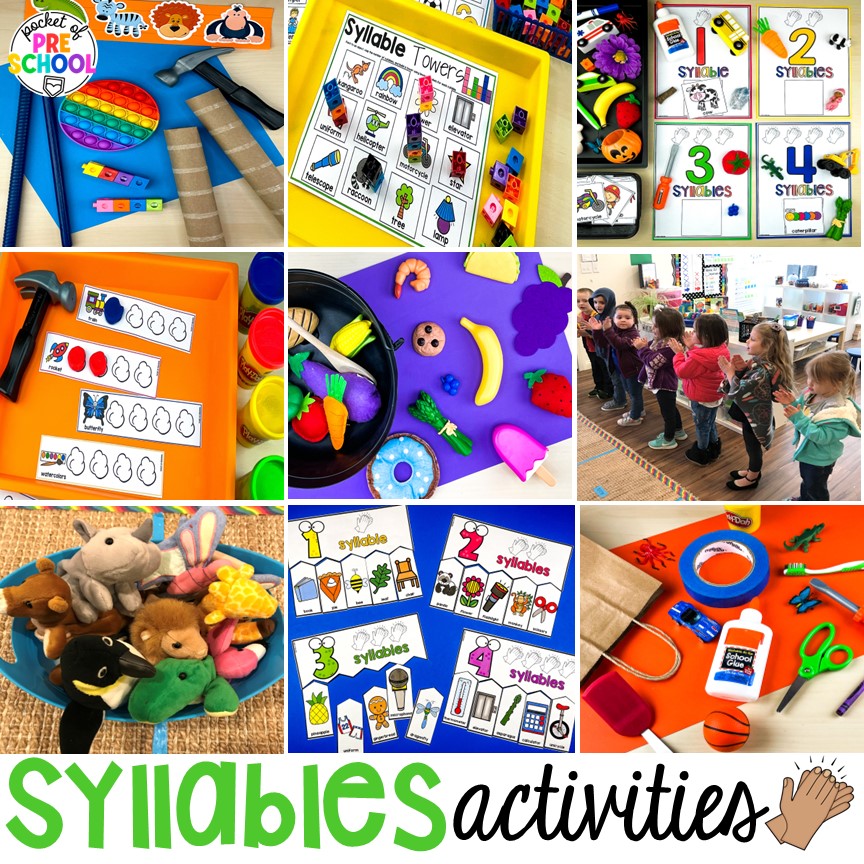
See my favorite syllable activities for preschool, pre-k, or kindergarten students in this post. Learning to count syllables is a vital skill and will help students with phonological awareness skills. Phonological awareness is an umbrella term that includes the four skills: word awareness, syllable awareness, rhyming awareness, first sound awareness, and phonemic awareness (hearing and manipulating the individual sounds in words). Syllable games are a fun way for students to develop a strong phonological awareness by chunking syllables (parts in words). Students will practice syllable segmenting and counting syllables.
Check out the Syllables Bundle for tons of printable syllable resources!
This post contains affiliate links which means I earn a tiny commission when you use my links at no cost to you.
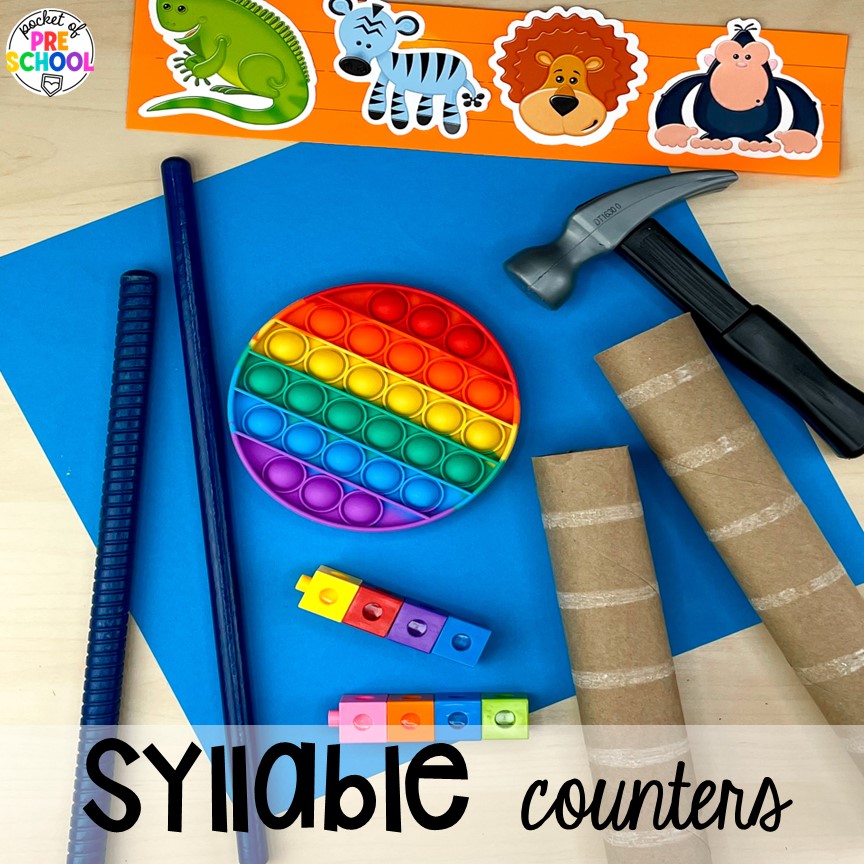
Syllable Counters! Use objects to make counting syllables hands-on. There are different ways to count multisyllabic words.
- Clap
- Stomp
- Feel It: place hand under the chin to feel the chin move (each time their chin moves down and touches their hand is one syllable)
- Tap Blocks: connect four cube blocks for the student to tap as they say the word, tap with sticks, tap with paper towel rolls
- Pop Its
- Hammer It
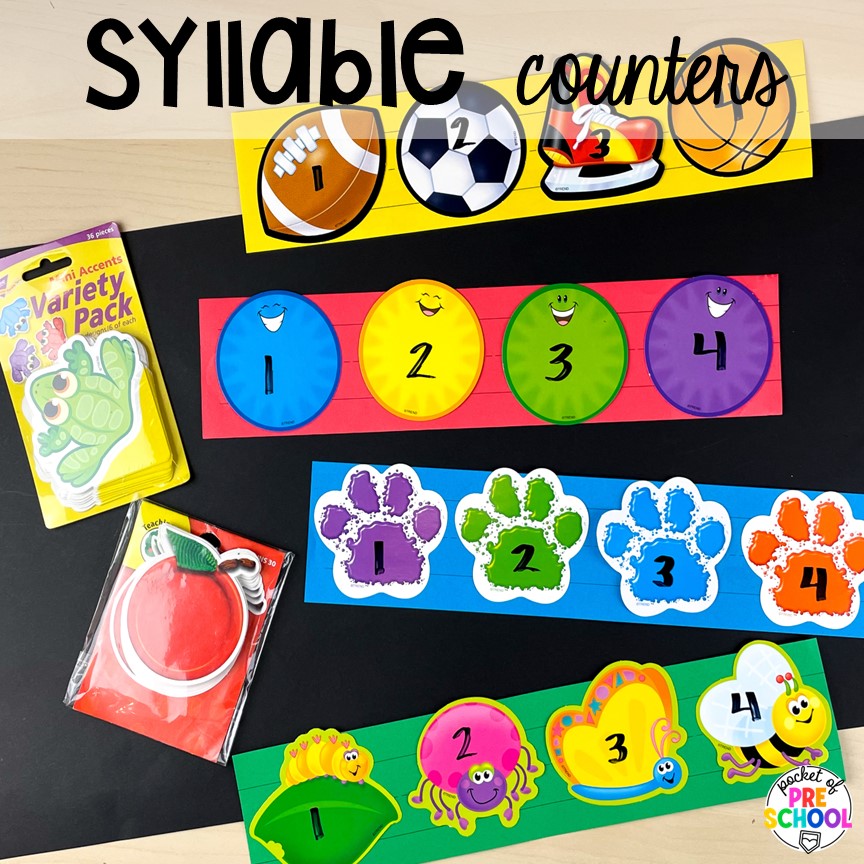
DIY Syllable Counters! I made a class set of these to use with leftover bulletin board pieces that I used for circle time spots. This was their favorite and is larger for three-year-olds to use. The cubes are so small they may frustrate three-year-olds. Plus, using old bulletin boards is a simple way to match your theme for more fun activities.
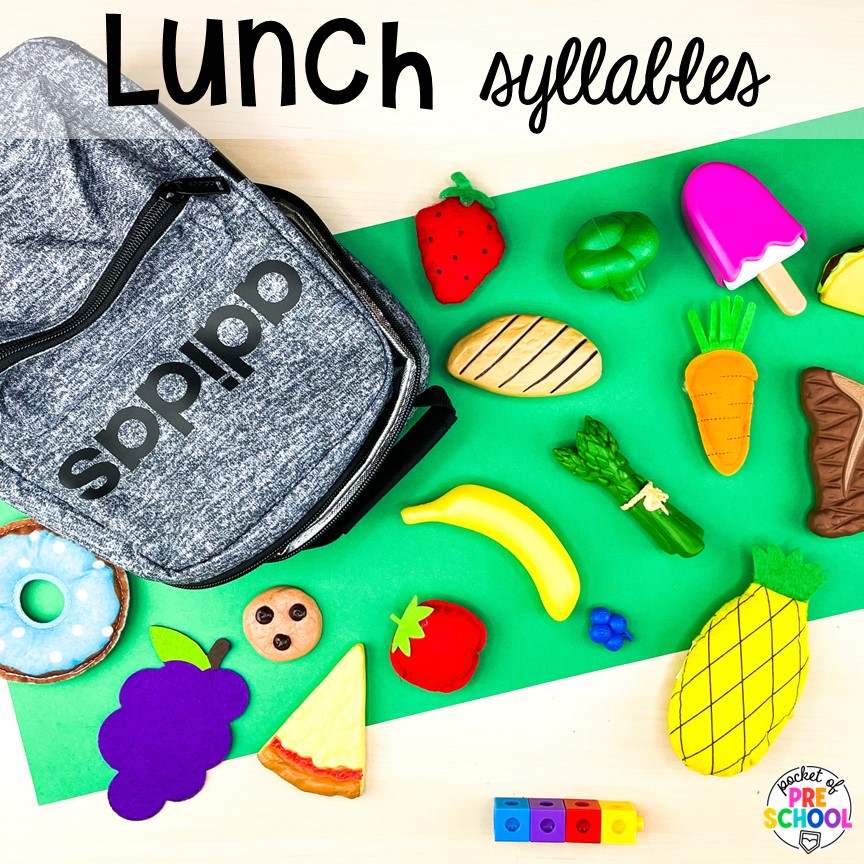
Lunch Syllables! Students pick an item from the bag or bowl and count the syllables. You can do it for a small group or a transition activity which I would do for circle time to wash hands for snack transition. It’s quick and fun—a great way to build students’ vocabulary for unfamiliar items like thermometers or asparagus. Food items would be great for a food/nutrition theme, Thanksgiving, grocery store, picnic, or back to school.
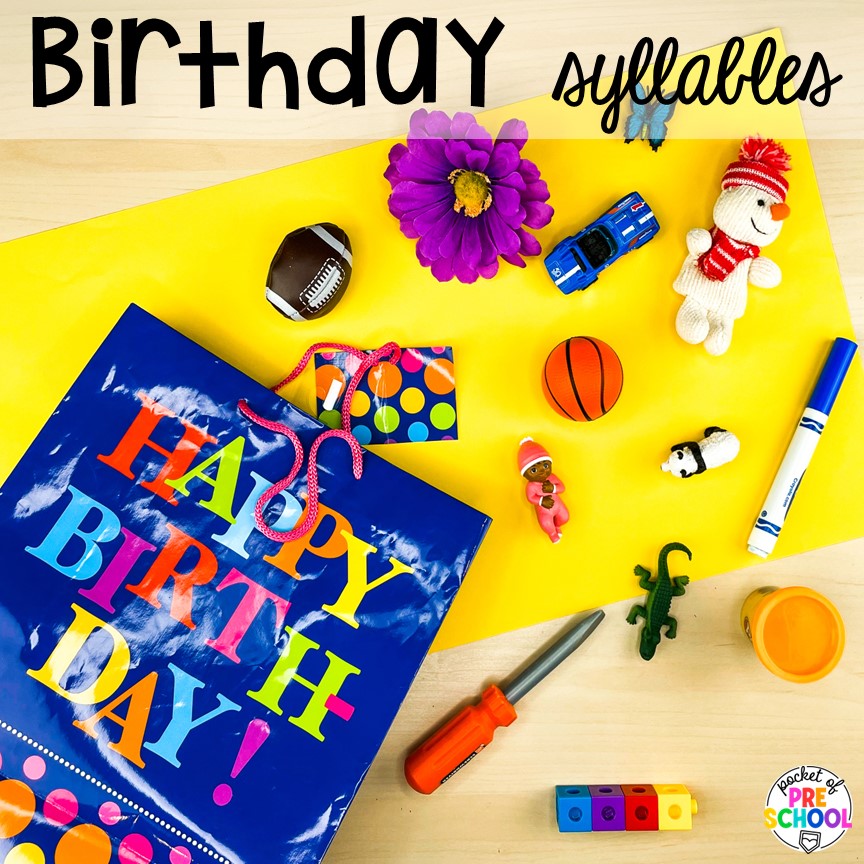
Birthday Syllables! Students pick an item from the bag and count the syllables. You can do it for a small group or a transition activity which I would do for circle time to wash hands for snack transition. It’s quick and fun—a great way to build students’ vocabulary for unfamiliar items like thermometers or asparagus. A gift bag filled with treasures would be great for a birthday or Christmas theme.
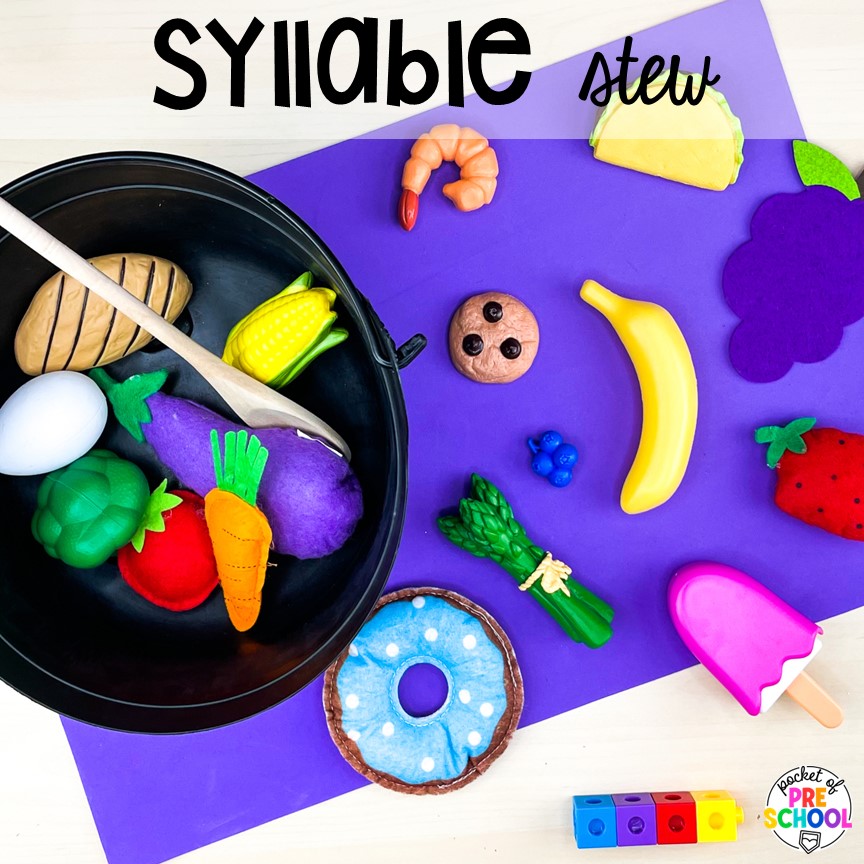
Syllable Stew! Grab some food items, a pan, and a spoon, and create a syllable stew. Students stir, scoop an item, and count the number of syllables. Be sure to pick items that are longer words and have multiple syllables. This would be great for a food/nutrition theme, Thanksgiving theme, or cooking theme.
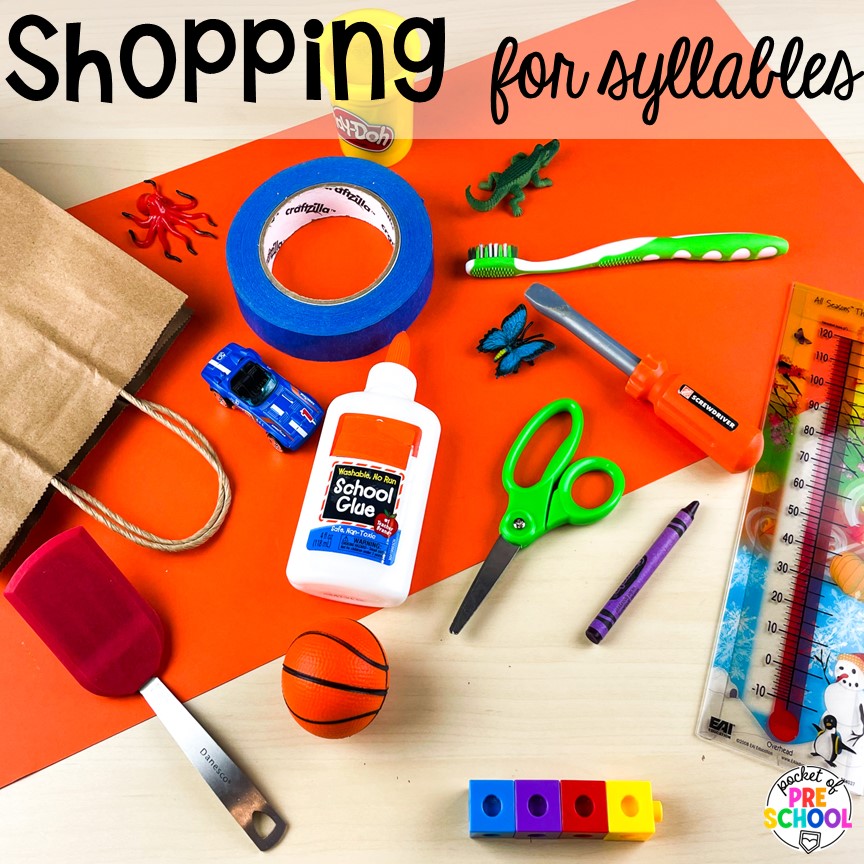
Shopping for Syllables! Students can collect items from around the room, or you can have the items already in the bag. Students pick an item, name the item, and count the number of syllables. This is a simple activity for a grocery store or community helper theme.
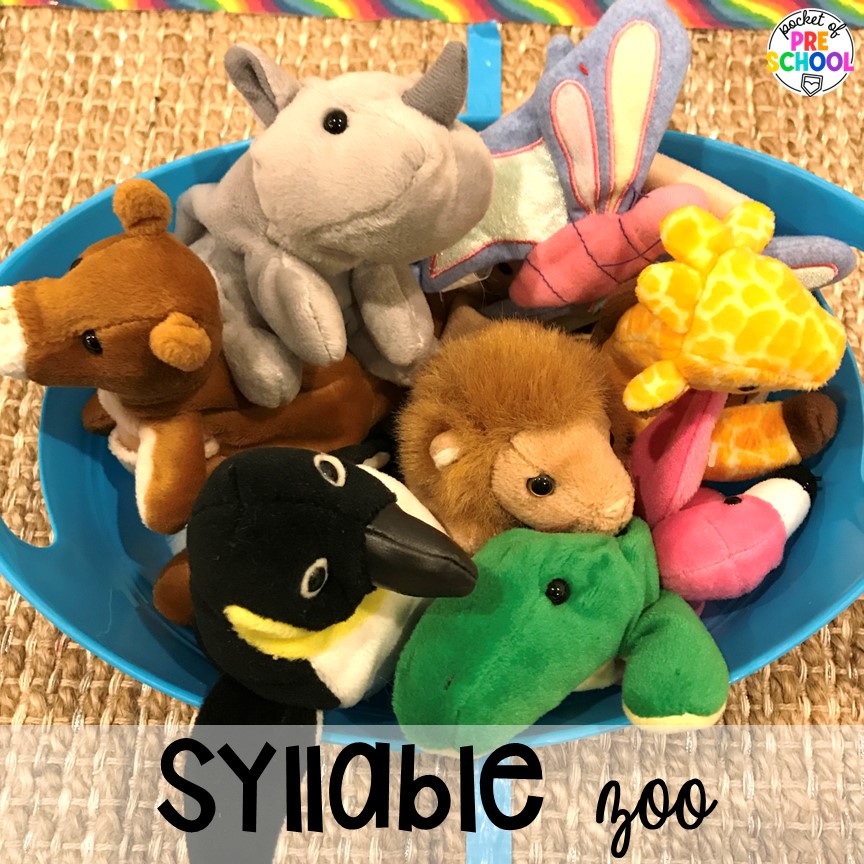
Syllable Zoo! Gather your stuffed or plastic animals and have a syllable zoo. Students pick an animal and say its name. Then count the number of syllables in the name. This would work for a zoo, habitat, farm, polar animals, or nocturnal animals theme. I love this hands-on way of teaching syllables!
Syllable Sort! Use a picture card and/or real objects for a sorting activity. I like to do this for a small group, arrival activity, or as a center game. Students isolate the part of a word and count each part. You can find the printables here.
Syllable Pocket Chart Sort! This syllable sorting activity can be done at circle time, whole group time, or in a center setting. Pocket charts are the best ways to change a game for students. It moves the game from the floor or table to a standing game and may engage a young learner that was bored before. Find the syllable sorting cards here.
Syllable Smash! This is a fun, hands-on activity that students complete with play dough and a hammer. They place play dough balls on the syllable card mats and smash the number of syllables. This is great for fine motor practice too! Grab the syllable smash cards here.
Syllable Tower Mats! Students build towers with legos or linking cubes that have the number of syllables in each word. This is great for fine motor skills when students snap and unsnap the cubes. Grab all the syllable tower mats here.
>>Get the syllable tower mats freebie by filling in your email in the form at the bottom of this post.<<
Syllable Puzzles! Create syllable puzzles that young children can sort and put together for syllable practice. There are three different sets of puzzles, including puzzles for 1, 2, 3, and 4 syllable words. Print them on cardstock and laminate them so that they can be used year after year. Grab the syllable puzzles here.
Syllable Chains! Have students work on fine motor skills and syllables while they make these fun syllable chains. These would be great for a small group activity, morning work, or a center resource. Find the printable syllable cards here.
Syllable Count! Use these syllable cards to play a fun manipulative counting game. Students identify the picture and count the number of syllables. Then they place that many manipulatives on the mat. I used mini erasers, but you can use any small manipulative you have in your hand. Grab the syllable cards here.
Syllable Clip It Cards! Grab some clothespins and these syllable clip it cards for a fun and engaging phonics game for young children. Clips are great for fine motor work and can help strengthen those hand muscles. Mark or place a sticker on the back of the correct answer for a simple way to make these self-checking.
Syllable Unicorn Munch! Print the unicorn heads and cut their mouth out. Then tape them on top of a container or box. Students will count the number of syllables on the food cards. Then students will feed the food card to the correct unicorn. This feed me syllable set also comes with a frog, shark, and monkey option!
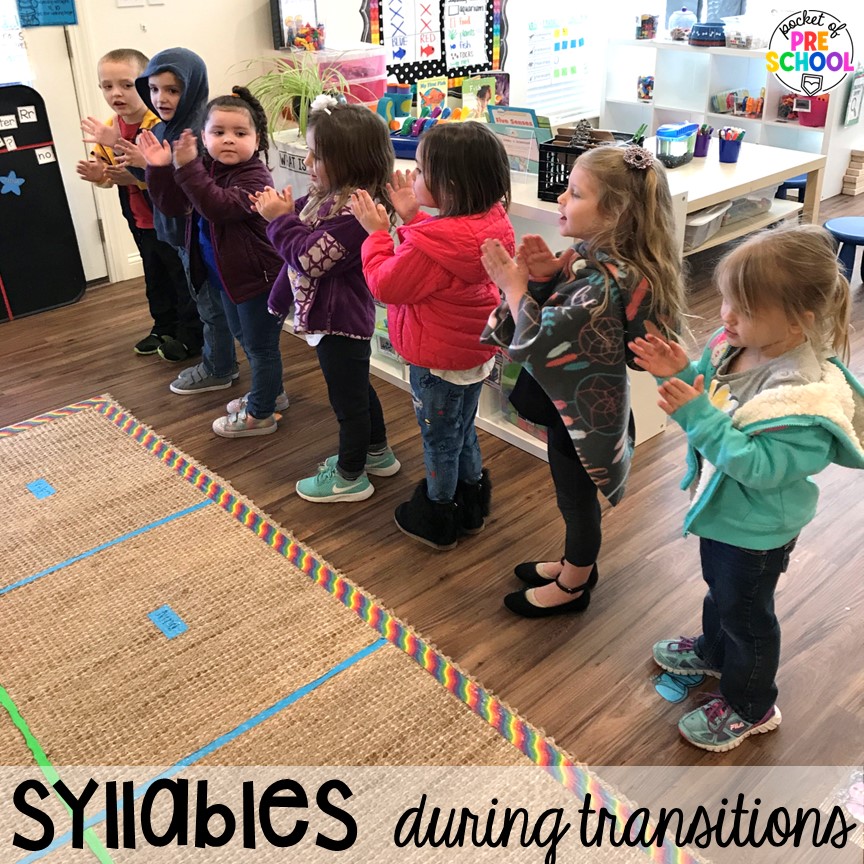
Syllables During Transitions! Using syllable games during transitions is a great way to use all your learning time. When in line waiting for a kiddo, say a word and clap/stop/jump syllables. Use all those small moments for learning; they add it. I like to use children’s names during this time too!
Syllables Assessment! Use a data binder at your small group or when doing a syllable activity for a transition and check to see if students have made progress with this skill and mark it. Super easy way to get an assessment in because you are already doing the syllable activities; just bring the data binder with you!
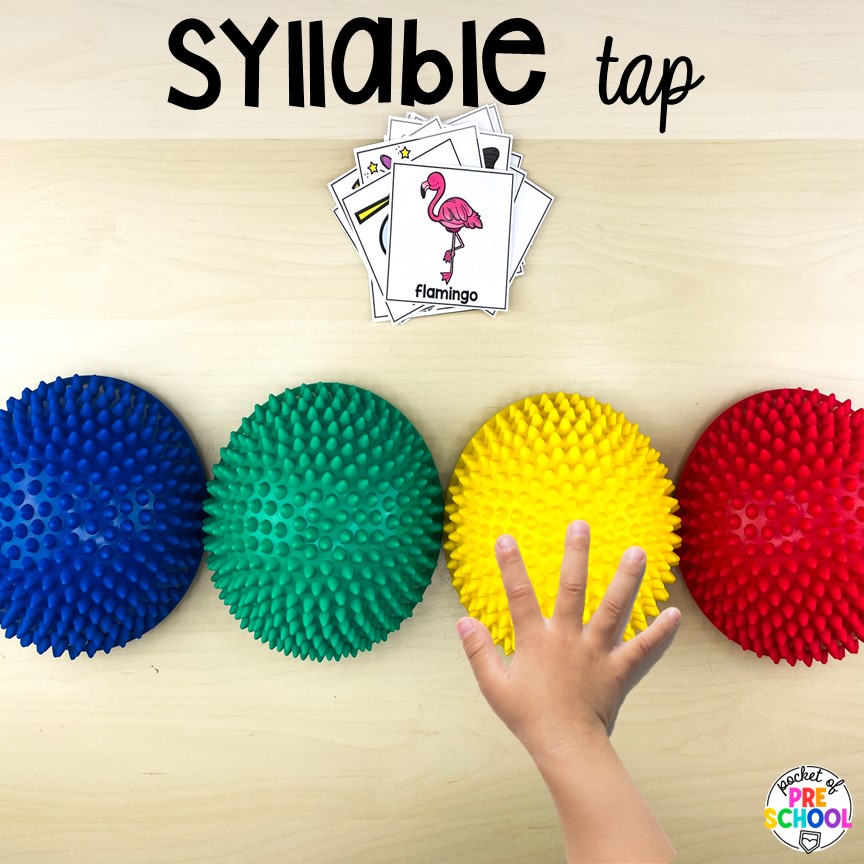
Syllable Tap! Use foam circles/icons or sensory stepping stones for students to tap as they say the syllable. This is very helpful for introducing this skill or for students who are struggling with this skill. Giving them a sensory option can help use other parts of their brain and give them a new learning experience with different syllables.
Counting syllables can be a difficult skill to master, but with repeated exposure to a variety of activities will set your students up for success. My students always loved these fun syllable activities for young kids! Save money by grabbing the syllable bundle for ALL the syllable activities!
Check out this post for more literacy ideas in the classroom!
Play letter musical chairs for letter practice with movement!
Check out this video with Syllable Activities!
Love this post? Pin this image!
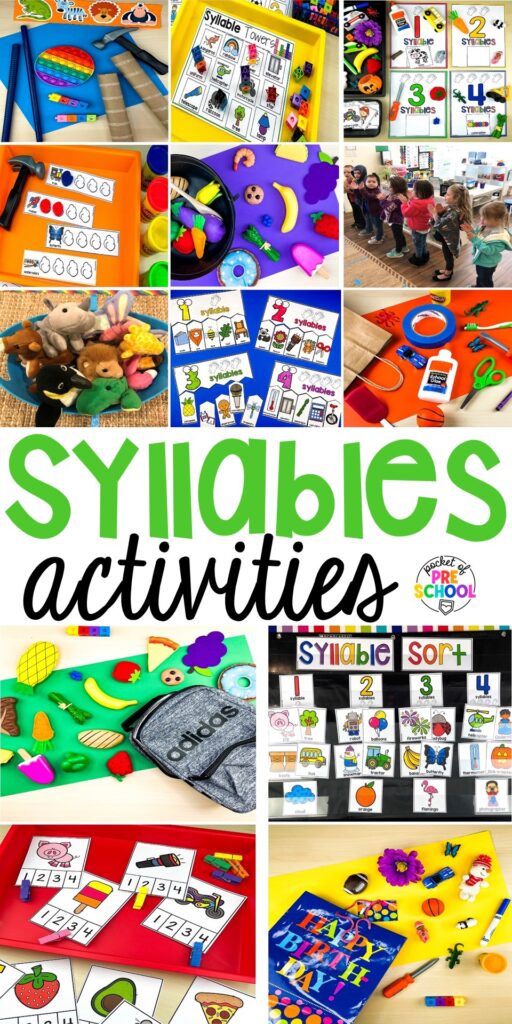
hey, i’m jackie!
I’m Jackie, your go-to girl for early childhood inspiration and research-based curriculum.
